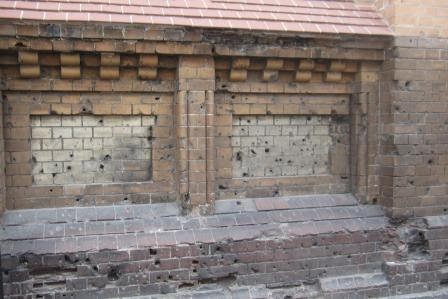
The Warsaw Uprising began August 1, 1944 as a heroic, catastrophic last stand against the Germans, and ended 63 days later with the death of more than 200,000 Poles, the majority civilians. After nearly five years of German occupation, the Russians were advancing from the east, sending German troops into retreat. The Germans had begun evacuating Warsaw. In July 20, a failed assassination attempt on Hitler revealed a huge coalition of top German officials complicit in their perceived need to murder Hitler. And, Soviet aircraft even dropped leaflets in Warsaw exhorting people to rise up in armed action. On the surface, it sounded like a good time to revolt. History played out differently.
Signals the Polish Underground Missed

The Germans did not continue their retreat from Warsaw. They returned in force and flattened almost all of the remaining city. Whereas the Russians signaled a revolt, there had no intention of assisting Poles to reclaim their country. Instead the Russians had already begun instituting their communist rule. They controlled the airfields that would have allowed Allied planes to drop supplies, IF they even tried. The Poles were not aware that Churchill and Roosevelt had already met with Stalin, and agreed that Stalin ‘could have Poland’ as a result of the war. The Russian army stood by across the Vistula River until the Warsaw Uprising was squelched, then rolled in to claim the city as theirs.
The Warsaw Uprising is Far Less Well Known and is a Completely Separate and Different Event from the Warsaw Ghetto Uprising
A discussion of history shouldn’t begin with what “It wasn’t,” but with many things Polish I seem to do that a lot. When I first met Henry Zguda, the standard inquiry was “What? He wasn’t Jewish? Why was he in Auschwitz?” I got used to answering every time with “Yes, he was there, and yes he was Catholic.” The near identical response I get whenever I mention the Warsaw Uprising is “You mean the Warsaw Ghetto Uprising, correct?” Now I respond with “This is the Other uprising.” In 2015 I wrote a good overview of both uprisings, why both are significant, and how they are different. Read it here.
Additional Information on the Warsaw Uprising
I’ve written previously on the Warsaw Uprising. Click here for 2016 post with more information on the Uprising.
A German viewpoint of the Warsaw Uprising, July 30, 2017
The Warsaw Uprising Museum in Warsaw is an outstanding resource and quality institution that rivals the Smithsonian museums. I consider it a must-see for anyone who visits Poland. All signage is in both Polish and English. Audio guides in twenty-four other languages are available for visitors.
Warsaw Uprising, the Film, a Polish language documentary is perhaps the only film painstakingly pieced together entirely from actual footage. The film was is incredible, though difficult to find outside of Poland. Trailer below. Everything you see is real.
(#Warsaw #WarsawUprising #Poland #WarsawUprisingMonument)

4 Comments. Leave new
Thank you for honoring the people of Poland.
Fascinating history. Resisters were doing what they could. Thank you for educating. I love the book cover and your new photo. You are set for success!
Thanks Marcia!
Thanks for keeping us on track with this and for all you do!
Love your picture.